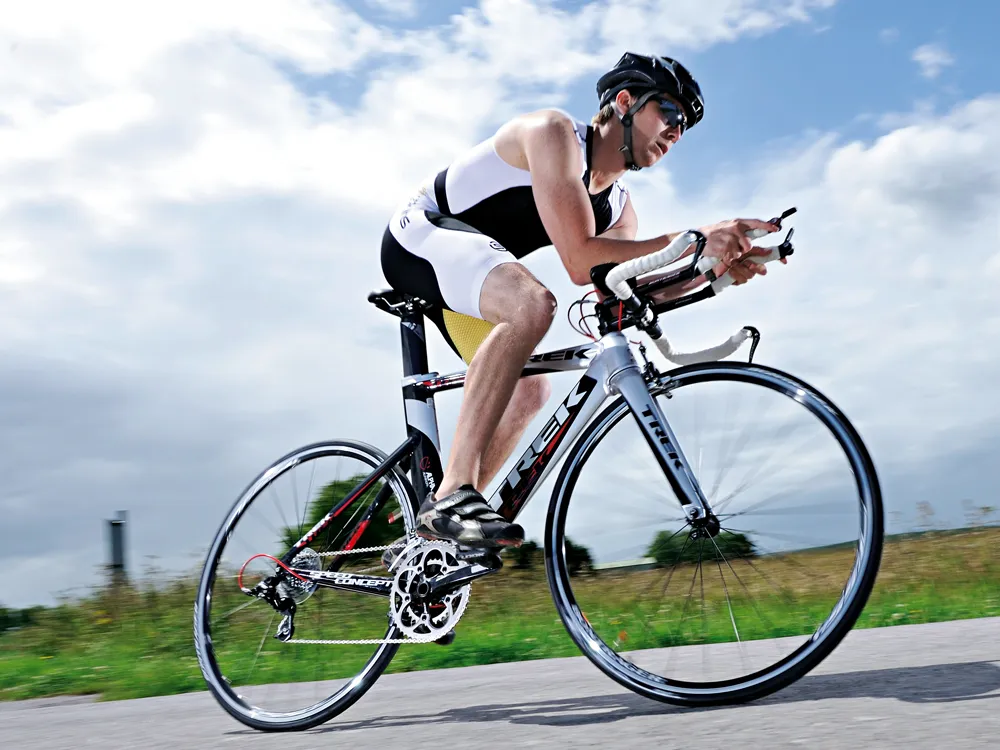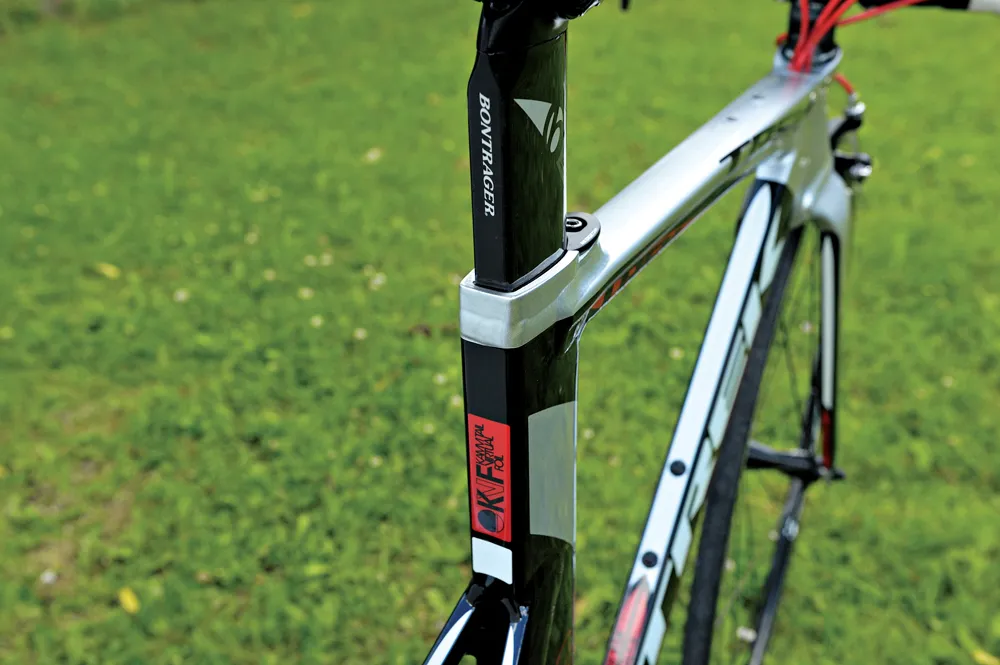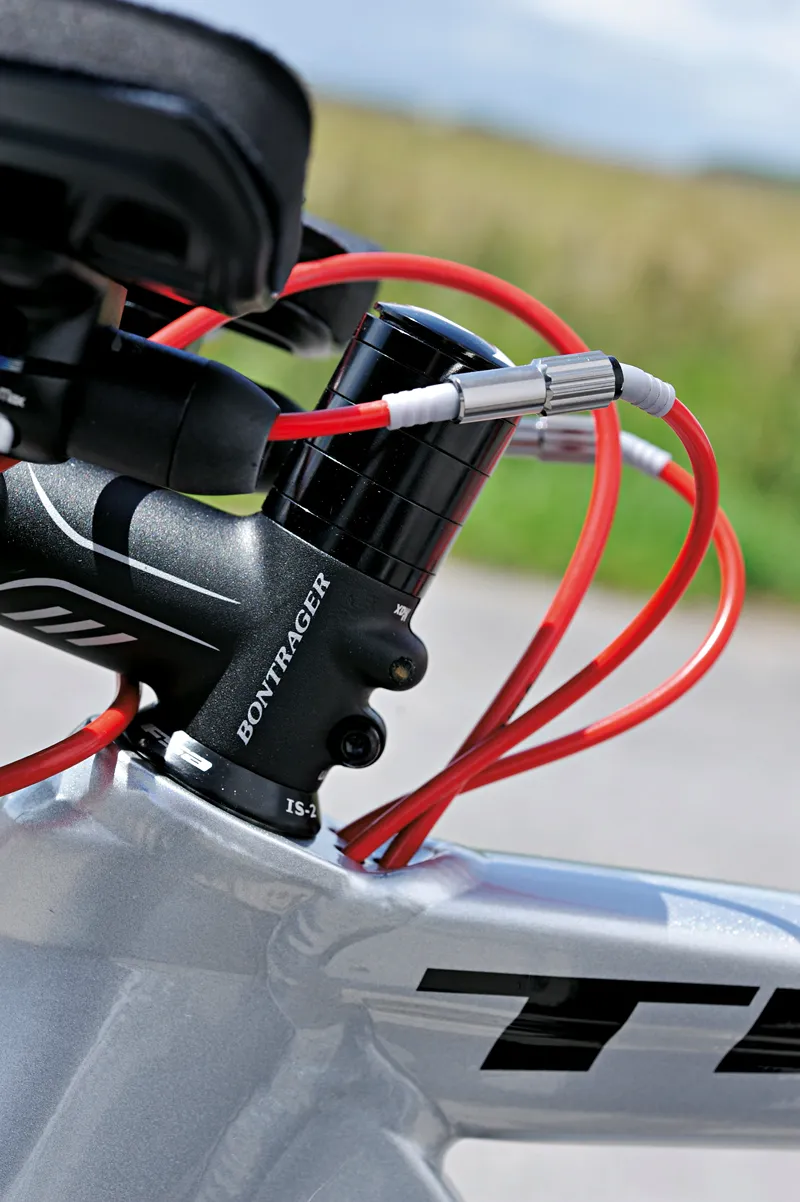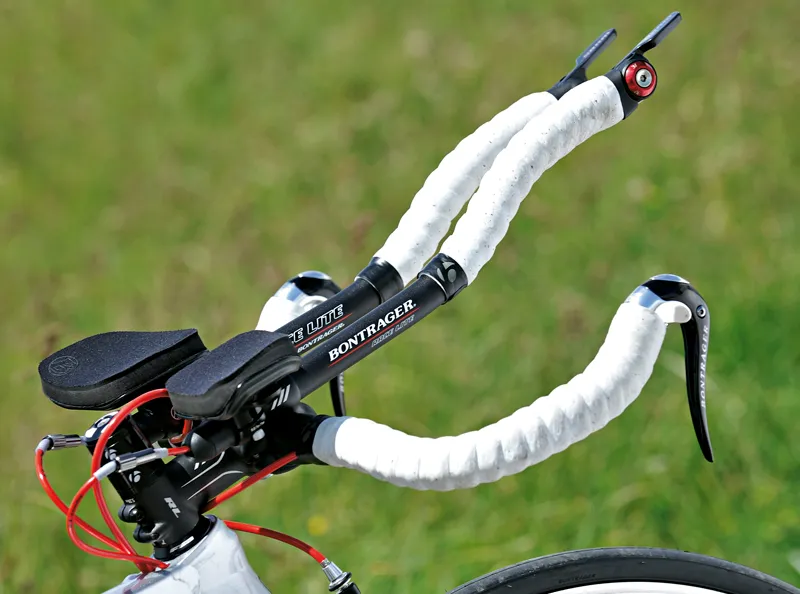Trek’s Speed Concept 2.5 gets the same aggressive position and chopped teardrop profiling as the carbon 7-series bikes. The overall ride is more heavy metal than an Aerosmith chart-topper though.
The Speed Concept looks amazing, with all sorts of tricks to cheat wind and attract buyers, while the alloy frame’s weight is impressively close to the carbon version’s. But it’s still heavy in comparative terms and although the aero effect is obvious at higher speeds, fit, handling and overall responsiveness issues meant our test team rarely experienced the benefits.
Ride & handling: Low acceleration and responsiveness
While Trek have clearly spent a vast amount of time in the wind tunnel and on the drawing board to chase drag out of every part of the bike, the war on wind seems to have been waged at the expense of friendly rider interaction and easy ergonomics. In other words, while there might be the option to extend the seat tube aerodynamics and store your mid-ride munchies in a more aero manner, all our testers, apart from a couple of die-hard drag queens, found the fit of the Speed Concept uncomfortable and restrictive, even after spending time tweaking the contact points.
The narrow shoulder and arm position caused by the narrow-span bar and extensions was an obvious problem for some broader-shouldered riders. Several riders also complained of reflux when trying to rev the bike, which was hard even in the tallest position possible. Issues like cable contact between the knees, the bulky tension screw adjusters looping out from behind the stem, and even rattling internal cables got on riders’ nerves.
While the handling in the tuck was sure-footed and stable for those who eventually got comfy, it’s positively frightening if you lift out of the saddle to inject speed out of a corner or up a climb. And although power transfer from the big frame tubes is reasonable, high bike weight – particularly the wheels – also meant low acceleration and responsiveness in general.
Combine this with the soft braking and you’ve got a bike with a cruiser rather than combative feel – as evidenced on group rides where the Trek struggled to keep the other bikes in sight. On the bright side it’s not as jarring as we feared from such a slab-sided alloy frame. You’ll need to keep an eye out for any significant potholes or rough patches though, otherwise you’ll be punished through your palms and shorts pad.
Frame: Kammtail aerodynamics and integrated storage
The aggressively deep maintubes and the tapered headtube (all coated in sparkling metallic paint) are certainly striking, and the Kammtail Virtual Foil (KVF) aerodynamics are something of a talking point too. The tubes’ blunt, flat backsides are designed to create flexible vortices trails and a smoother overall airflow in crosswinds than a full teardrop.
Anti-drag detailing is equally comprehensive. Internal brake and gear cable routing disappears vertically behind the stem. The extended fork top and downtube dovetail via a right-angled notch. The carbon aero seat mast is clamped with a wedge system that’s flush with the tapered horizontal top tube. While it’s not the complex, custom-faired in-brake of the carbon bikes, the rear U-brake is mounted under the chainstays behind the cranks in already ‘dirty’ air.
The frame is also drilled and pocketed to take Trek’s aero Speed Box top tube and Draft Box seat tube storage systems, as well as Speed Trap direct-mounted computer sensors. It’s not smooth-welded, but the Alpha Red aluminium is extensively shaped, which means this is actually a lighter frame than its carbon sibling if you include the integrated rear brake. It’s still heavy compared to most bikes though, especially if you include the amount of outer cable rattling round inside the frame.
Equipment: High weight and poor braking
Complete bike mass is relatively high too, and the Bontrager wheelset is the weightiest on test, which dulls acceleration. The SRAM Apex kit works smoothly though, and while we’d normally grumble about smaller compact chainset rings on a dedicated aero bike, when it’s designed for the entry-level market like this one, it’s much less of an issue. The Bontrager cockpit gives plenty of potential for adjustment too, although pad angle is crucial for a secure-feeling fit.
While the chrome-effect Trek brake levers are particularly neat and pretty, convoluted internal cable routing also makes braking feel mushy. The fat-nosed Vision saddle is also very much in the mushy mould, which was appreciated by some, although others found the breadth between their legs too much for comfort.




